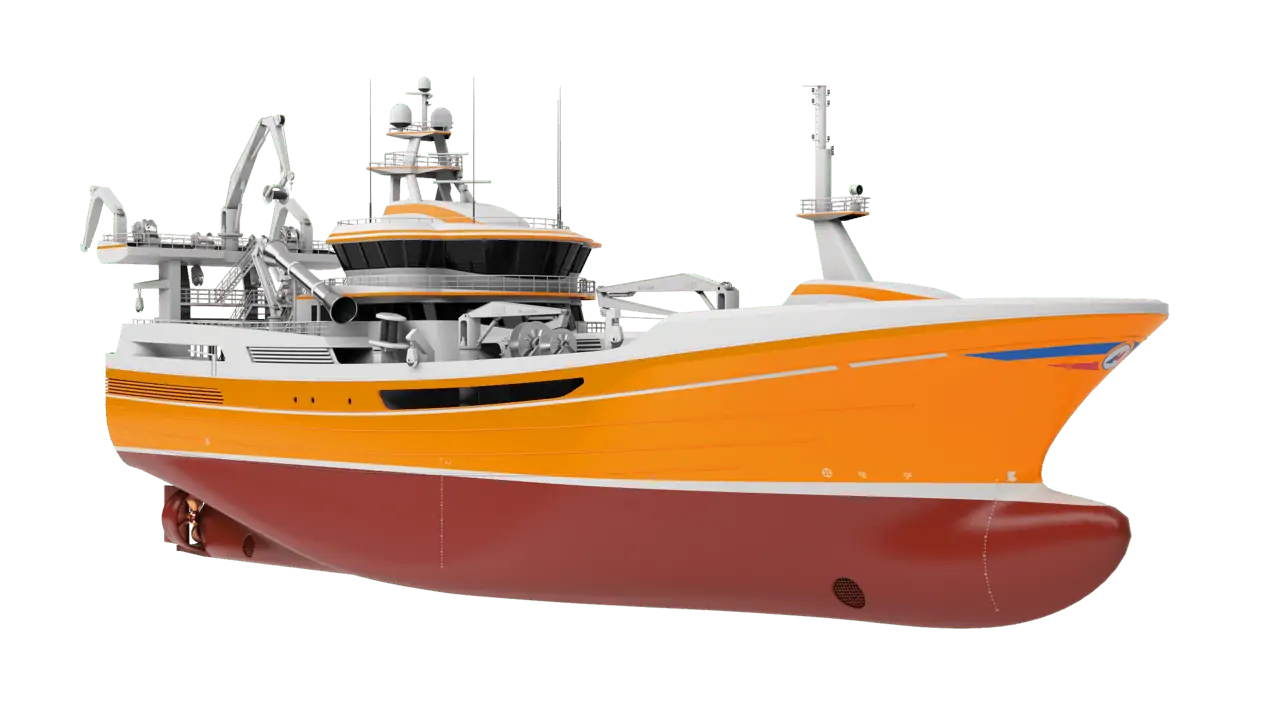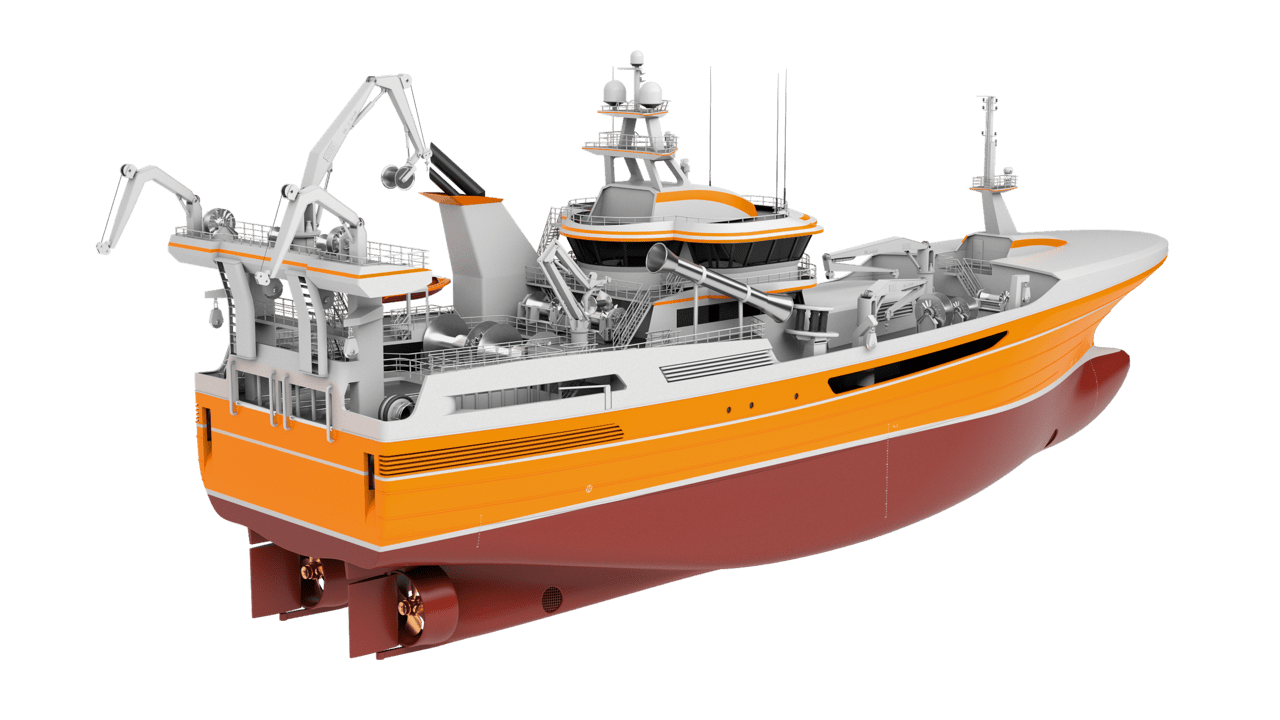Hirtshals-based Rederiet Isafold has reached an agreement to take over the part-built pelagic vessel that had been ordered by Henning Kjeldsen at the Zamakona yard in Spain.
The new pelagic vessel, which had been intended to become the latest in a long series of fishing vessels under the Gitte Henning name until owner Henning Kjeldsen decided recently to pull out of the pelagic business, will now become the energy-efficient diesel-electric Isafold HG-333.
‘We have just signed the contract and taken over what is probably the world’s safest, most modern and energy efficient fishing vessel. We have said yes to this because it secures the future of our opportunities to fish as sustainably and energy-efficiently as possible. Together with several other fishing companies, we have acquired additional quota shares in a number of pelagic fish species to compensate for the quotas we have lost as a result of Brexit. We are very satisfied with these transactions,’ said Lise Bjørn Jørgensen, who runs Rederiet Isafold with Karsten Mølgaard.
The new vessel, which has an 87 metre length and a 20 metre breadth, has 3700 cubic metres of RSW tank capacity for pelagic fish, all of which is needed to operate efficiently on fisheries in waters that are distant from Denmark.
The portfolio of quotas acquired as part of the deal includes blue whiting, which are caught west of Ireland, three days’ steaming from Hirtshals and Skagen. For this fishery, economies of scale are essential and this is where the new vessel’s large capacity and efficient operating systems are expected to pay off.
As the new Isafold incorporates a range of modern technologies to increase safety on board energy efficiency, the overall environmental cost per kilo of catch is significantly lower than with the company’s current vessel, built in 2006, which at the time set new standards for pelagic fishing in Denmark.
‘Part of the profitability and not least the sustainability is that the new ship is the first in the Danish fleet with diesel-electric propulsion. A high-capacity battery generates all the power and automatically switches on and off one or more of the ship’s five diesel engines,’ commented Karsten Mølgaard.
‘The ship also has the special feature that it is equipped with two propellers, which ensures efficient towing power and increases manoeuvrability in all weather conditions. This makes it a very special fishing vessel, which sets new standards for safety, quality and not least environmental factors.’






